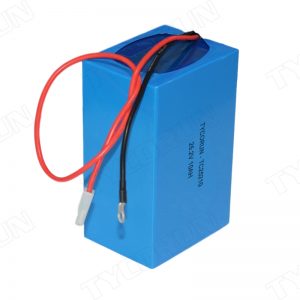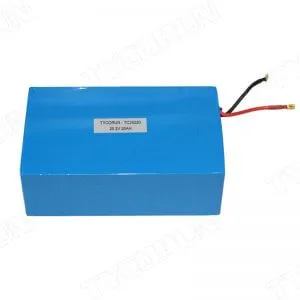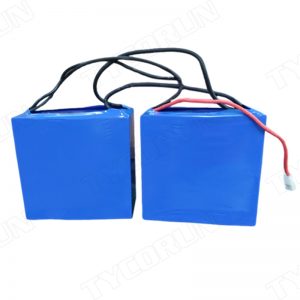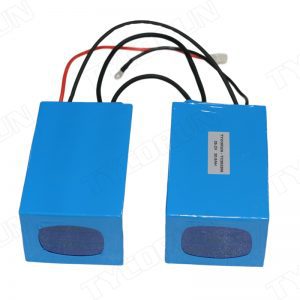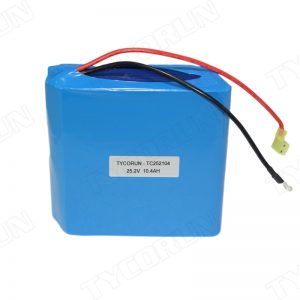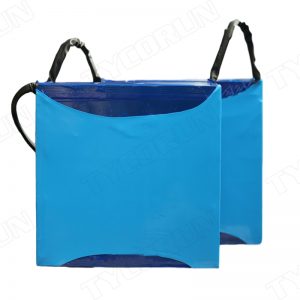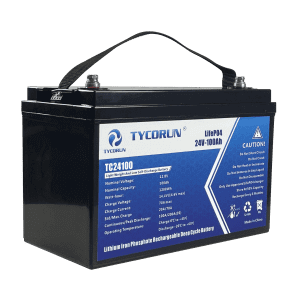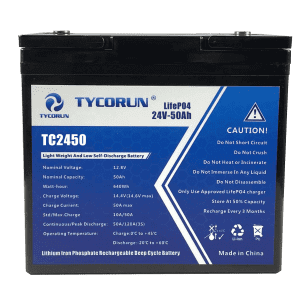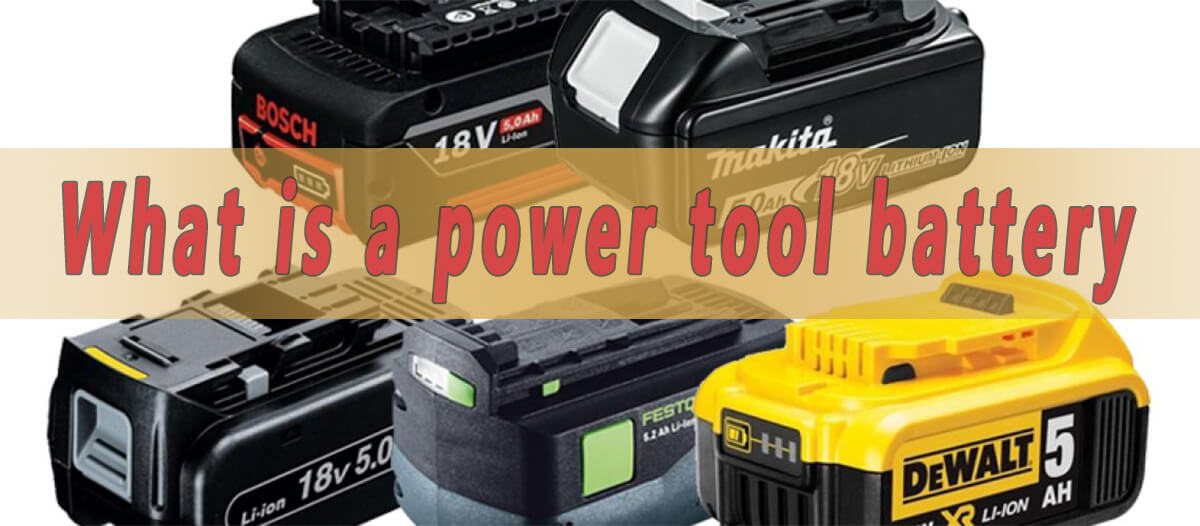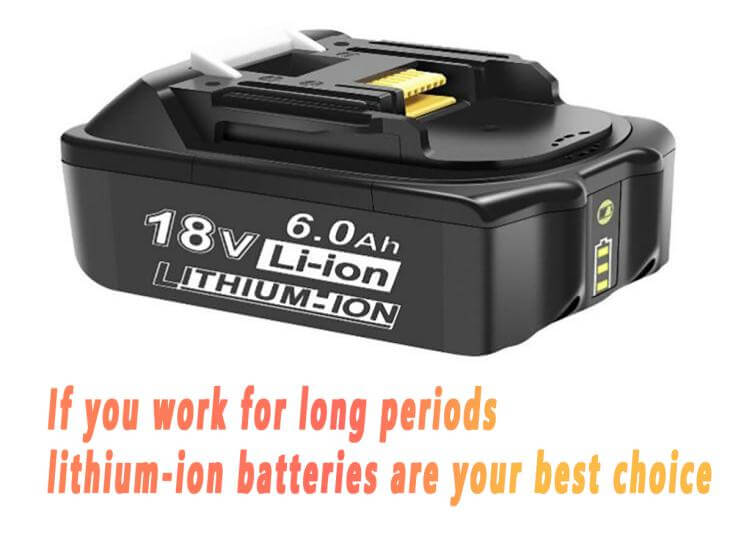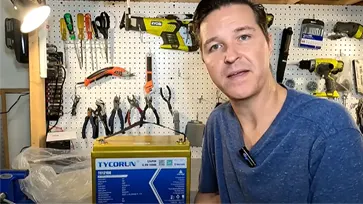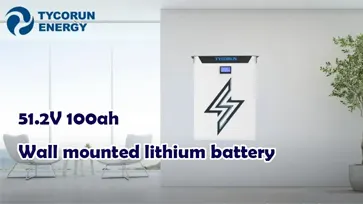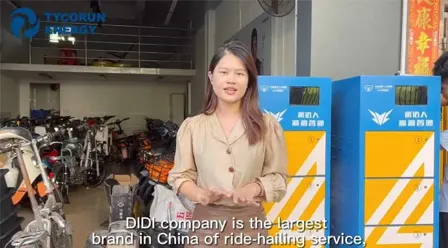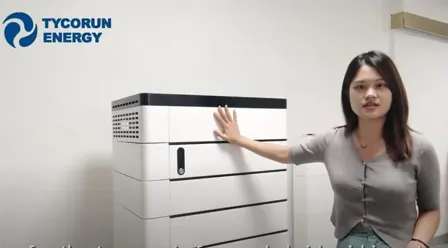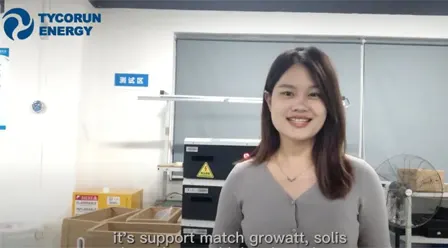Instructions and FAQs on lithium ion power tool batteries
lithium ion power tool batteries manufacturers
14-year professional lithium ion power tool battery manufacturers, 10-year warranty on battery packs, using the best BMS protection board, protecting the lithium battery pack from overcharge, overdischarge, overcurrent, short circuit, etc, with excellent self-discharge rate. Configurable Bluetooth, can be connected in series and parallel. The heating function and other special functions can also be customized. Enough stock for the 10 series of 12v lithium ion battery. Can be shipped within 3 days.
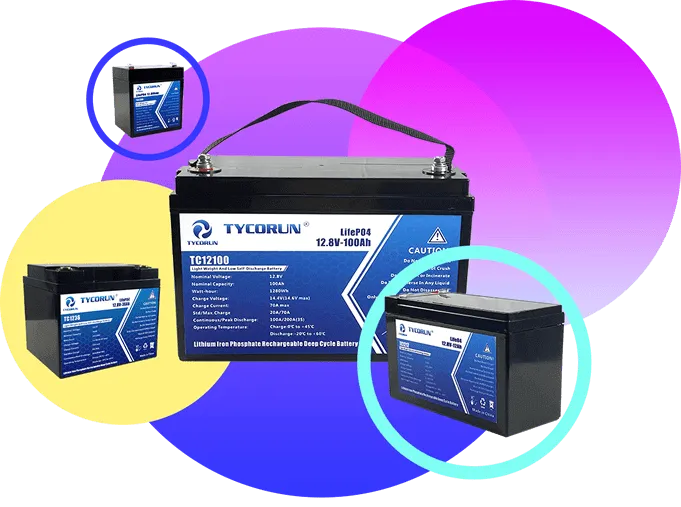
About lithium ion power tool battery manufacturers
TYCORUN® has more than 14 years of experience in the lithium power tool batteries industry and is a Chinese high-tech enterprise that develops, produces and sells various new energy battery products.
lithium ion battery production capacity accounts for 80% of our lithium battery manufacturing products
High quality assurance
TYCORUN is determined to become a leader in the lithium battery industry, quality is our culture!
Professional manufacturers
With lithium ion battery pack as the core, integrating channels and technologies
Factory wholesale price
We promise to let customers get the most cost-effective lithium battery products
Reliable Service Assurance
Provide lithium ion battery OEM, ODM, 1 MOQ.Full Set of Certificate
-
25.2v lithium ion battery
25.2v 10ah electric skateboard lithium ion battery
-
25.2v lithium ion battery
25.2v 20ah lithium ion battery for electric scooter
-
25.2v lithium ion battery
25.2v 33.8ah power battery 25.2 v lithium ion battery for hoverboard
-
25.2v lithium ion battery
25.2v 20.8 ah electric skateboard lithium ion battery
-
25.2v lithium ion battery
25.2v 10.4ah power battery 25.2v hoverboard battery
-
25.6v lithium ion battery
25.6v 48ah lithium ion motor scooter battery
-
24v lithium ion battery
24v 100ah lithium ion battery
-
24v lithium ion battery
24v 50ah lithium ion battery
Instructions and FAQs on lithium ion power tool battery
- What is a power tool batteries
- What factors should be considered while buying power tool batteries
- How to choose power tool battery chargers
- Storing power tool batteries
- Which battery type is best for power tools
- Lithium-ion batteries safe use
- How to dispose of old power tool batteries
- The future of power tool batteries
- How do you recondition a power tool batteries
- Conclusion
- FAQs about power tool batteries
What is a power tool batteries
Electric rechargeable tools became a must have for handy workers and DIY lovers. Screwing or drilling tasks are done easier and faster without the need of cables and plugs everywhere. Brands are competing to improve the specs and use of their tool where comes the need of improving the batteries as they are the main part. The goal is to have long life, fast charging and high capacity.
These tools are usually equipped with three main types of batteries: Nickle cadmium (NiCd), Nickle metal hydride (NiMH), and lithium ion (Li-Ion).
Even though all three technologies mentioned above are designed for the same reason, there are major diffrences between them. If you are interested in buying a battery and you are confused, the following part is for you.
Nickle cadmium NiCd batteries
Among all the technologies noted above, this is the oldest one. NiCd batteries are reliable and known for their toughness. These batteries perform better than the newer type metal hydride and the lithium-ion batteries when it comes to extreme conditions:
they are more shock resistant and can operate safely at a temperature range of -40 ~60° C. These specs keep them available until today and standing against competition, but they have serious memory effects and they are harmful to the environment.
Nickle metal hydride NiMH batteries
These are a new generation of the NiCd batteries but they are more expensive. However, it’s a price to pay for the specs this technology offers: lighter weight, the energy density is about twice that of NiCd batteries, and the most important feature is their reduced impact on the environment. They should be stored in the proper conditions to maintain them. Their temperature operating range is -20-6°C -4-140°F so not so sensitive to heat.
Lithium ion batteries
The Lithium-ion Batteries are the latest technology and the most recent of all 3. Even though they’re also expensive but their high energy density, light-weight and high capacity make them the best option. Their main problem is the temperature sensitivity during use or charge.
They have long life time, about 4000 cycles, and as it is becoming the most important criteria of evaluating products lithium-ion batteries have less impact on the environment than all other types.
Lithium-ion are the most promising type, as they are the most recent a lot of researches are focusing on developing them to meet the future requirements and improve their specs. Almost all recent tools are equipped with lithium-ion batteries.
What factors should be considered while buying power tool batteries
Life cycle: usually referred as the number of charge cycles the battery can withstand. For example, the NiCd could live up to 1000 cycles.
Self-discharge: Rechargeable batteries lose their charge even when not in use but this factor varies from one type to another. Professionals don’t keep their tools stored for long, so this doesn’t make a huge difference for them but it a factor that occasional user should consider. Litium-ion batteries are known by their low self-discharge rates.
Voltage: The voltage of batteries is mainly related to the tool their mounted on, relatively high performance and heavy-duty ones will require more voltage. The range goes from 7v for light duty to 36v for heavy duty.
Capacity: The capacity or run-time, is the duration the tool can operate between charges. It’s expressed by the delivered Amperes per hour “Ah”.
Memory effect : when the battery is frequently recharged without being completely discharged it kind of creates a memory of that and when it’s reused it provides electricity adopting the same cycle of recharge making it drop performance.
Lithium-ion batteries have no memory effect, and usually discharge to only 20~30% left to charge, which is beneficial to prolong the life of lithium batteries
How to choose power tool battery chargers
We can’t speak about batteries and not mention chargers, choosing the appropriate one is absolutely important for sustainability. For lithium-ion batteries, their chargers are specially designed for lithium batteries and should be selected very carefully to protect them. In most cases fake fast chargers will only kill the lithium-ion battery so it is recommended to keep it recharge without any attempt to speed the operation to avoid them overheat.
Storing power tool batteries
All batteries should be kept away from sunlight, temperature and humidity. It is important to keep the place ventilated to preserve them. In terms of storage, Normally, ambient room temperature is enough to maintain lithium-ion batteries. To avoid overheating it’s recommended to remove the battery from the charger once it’s completely charged.
Which battery type is best for power tools
The battery is what keeps the tool operating wireless, so it could be considered as the main component that should be chosen carefully. Like mentioned above, each of the three types has its Pros and Cons but to make a good decision you should consider the price, the endurance and the capacity.
If you work for long periods lithium-ion batteries are your best choice because they are known for their long run-time and light-weight so holding the tool for long time won’t be a problem.
In case of outdoors works in which there is a huge risk of sun exposure, the tough Nickle Cadmium are the best choice as they can resist to high temperature. But the memory effect of Nickle Cadmium can give you a headache.
Lithium-ion batteries safe use
For the last decade this new technology became more popular among power tool batteries manufacturers. Thanks to their improved capacity and extremely light weight lithium-ion batteries are the best option for many users.
Their materials are less toxic compared to previous models, they may be dangerous in case of miss handling. Lithium-ion batteries are known to be extremely sensitive to heat that’s the reason they should be kept in dry cool places.
As a user you should always read the manufacturer’s guide carefully, different lithium batteries have their own operating temperature range. The batteries could make chemical reaction if a liquid such as water is in direct contact with the internal cells which in extreme cases could lead to explosion. So, you can’t disassemble the battery by yourself.
After charging or in case of non-uses it’s recommended to disconnect the batteries to avoid any potential overheat because in this case Lithium-ion batteries are likely to catch fire or explode. Make sure to use the original charger to maintain the lifetime of your battery.
So, for a safe use just follow instruction and don’t try any weird tricks from the internet at home.
How to dispose of old power tool batteries
The mentioned 3 battery types are designed to be recycled or treated to avoid their negative impact on the environment. Being instable elements, batteries of all kinds should never be thrown in nature or with ordinary garbage because they contain hazardous materials such as cadmium which could contaminate water or soil if thrown in nature.
Worldwide there are special containers or even centers where you can dispose of your old batteries also some stores could accept them for recycling purposes. The lithium-ion ones are the most environment-friendly batteries they could be easily recycled.
To avoid any kind of accidents don’t try to manipulate or open a dead battery on your own at home it’s a dangerous operation that should be performed only by professionals.
Also, you should never throw an old battery in fire as it may explode due to the heat. Some experts recommend covering the connectors with tips before getting rid of a battery in case not sure it’s fully discharged.
The future of power tool batteries
Power tools have no wires and could operate four hours without needing a fix source of energy. This feature, makes them the best choice for workers as they reduce their need for plugs and that give them more mobility in work.
The high demand and the developments lead to the need of more powerful batteries for the bigger tools. The lithium-ion batteries are the best option that meets all requirement of the industry with latest researches giving them the capacity to recharge in few minutes and last longer.
But in the field of high-tech there are always new invention like the carbon-ion cells. These batteries use ionic electrolytes and nano carbon to store energy. These batteries will have the capacity to store more energy operate at high voltages and the most important charge very fast.
How do you recondition a power tool batteries
When a battery life cycle seems comes to its end, it doesn’t mean you should get rid of it. There are ways and tricks to save the battery and your money. Power tool batteries are very easy to recondition without the need for a huge knowledge about chemics or mechanics.
The main thing to know about reconditioning batteries is the reasons they need to be reconditioned. Batteries die because of the memory effect or crystal formation, to deal with those problems and bring your battery back to life, you can follow some simple steps.
Memory effect
The main reason for this problem is not using the battery to its full potential, this leads to a loss of capacity. The process of fixing this problem is very easy and simple:
– Charge the power tool completely
– Unplug the charger, turn it on, and discharge all power.
– Charge it again
– Repeat this process a few times to reset the battery.
Crystal formation
This is due to the formation of small crystals on the anode and cathode inside the battery.
This phenomenon reduces to contact surface between electrodes and electrolytes, and it’s caused by overcharging.
The easiest way to deal with the problem is using a battery conditioner. If you don’t have one, deep discharge the battery. Each cell needs to discharge below 1V. Recharge it again and use it. Avoid manually discharging the battery too many times.
Conclusion
To sum it up, there are three types of power tool batteries, each has its own pros and cons and could be chosen to fit user’s requirements like endurance and capacity. Batteries should be maintained in the proper ways to improve their lifetime and when they’re not useful there are safe ways to get rid of them.
FAQs about power tool batteries
1.What is the life duration of a power tool batteries?
Most batteries have a life duration of 1000 cycles, of course that depends on the way it’s used and maintained because some practices could extend or reduce the life-time but in general batteries last 2 to 3 years before they need to be replaced.
2.Is it OK to store power tool batteries in the garage?
In general, power tools are placed in the garage, but to maintain the battery’s health you should make sure some conditions are verified. The batteries should be kept away from sunlight and any other source of heat to preserve them. The garage has to be dry and well aerated to avoid humidity damaging the battery.
3.Can cordless tool batteries be rebuilt?
Cordless tool batteries are expensive, so when they die rebuilding them could save a lot of money. Lithium-ion batteries cannot be rebuilt but the other types of batteries (NiCd and NiMH) can. They are made of 1.5 V cells; the trick is to weld together a number of cells meeting the specs of the battery. This process is easy but should be done by professionals to avoid any accident.
4. Should I remove lithium batteries from power tools when not in use?
Even when not in use, batteries lose power due to self-discharge, but there are some tricks to reduce that effect. It’s recommended to remove the lithium-ion batteries from power tools when not in use. Also, if not planning to use it for a while, try to charge the battery to 50% before storing it.
Professional China Lithium Battery Companies
As a professional China lithium battery companies, TYCORUN ENERGY Adopt AAA Lithium ion battery cells design and production, provides upstream suppliers consultant for your lithium ion battery pack solutions.
Safety lithium battery pack high cost-effective, up to 10% – 25% cost savings.
FAQ About Buying Lithium Batteries
Most common applications for lithium battery
Lithium battery is widely used in many industries, ranging from powering the vehicles, scooters, bicycles to energy storage in home use, commercial use and outdoor power supply, etc. Generally speaking, lithium ion battery manufacturers make 2 kinds of lithium batteries: ternary lithium battery is applied for powering to move because of its high energy density and discharge rate, while LFP lithium battery is more popular with energy storage for its stable chemistry components and longer cycles. Some of the most popular application of lithium battery cover EV, RV, golf cart, forklift, camping power supply, kayak, scooter, solar power system, home Energy storage system, UPS Data center, telecom and IT backup, Industrial Equipment, etc.
What Factores should you Consider When Buying lithium ion battery?
Professionals from lithium ion battery manufacturers advise you that you need to provide the following information when buying lithium batteries. you need to provide the following information:
Rated voltage(V)
Operating voltage range(V)
Capacity(Ah)
Charging current (A)(Rated current/ Maximum continuous current/Peak current)
Discharge current (A)(Rated current/Maximum continuous current/Peak current)
whether it needs to be in series or parallel, and if so, how many in series or parallel.
Our lithium ion battery factory engineers will recommend the most suitable and cost-effective lithium ion battery packs
What certifications are required for lithium batteries?
Commonly used certifications for lithium batteries are dedicated for transportation and certification of product quality. Not too many lithium ion battery manufacturers will apply for those certifications because of the high cost. Fortunately we have some of them and in the future we will apply all of them for our worldwide market. The certifications as per below:
Transportation unique qualification: generally MSDS, UN38.3, report for sea as well as air transportation of goods
MSDS is a chemical safety and security technical spec, a file utilized by chemical producers and importers to clarify the physical as well as chemical residential properties of chemicals as well as the possible damage to the health of users.
The UN38.3 is specifically created by the United Nations for the transport of lithium battery by sea or by air.
Identification and classification report for sea and air transport of goods: It is a report that needs to be provided when batteries and products with batteries are transported by air or by sea.
Product quality certification: Different countries have different product quality certifications. Commonly are:
European Union: CE, ROHS
North America: FCC, UL
India: BIS certification
How to ship the lithium ion batteries?
For purchases from China lithium ion battery factory, We have three shipment way to ship out the goods,
Option 1: SEA WAY, we can ship out the lithium battery to every country via sea way. And We have UN38.3 & MSDS certification. Here’s the range time for the shipment date.
USA: 30-40 days
Europe: 30-40 days.
Australia: 35-45 days.
Option 2: AIR WAY, If the single parcel less than 68KG, that we can use the air way.
USA: 12-15 days
Europe: 12-15 days.
Australia:15-18 days.
Opyion 3: TRAIN WAY, We can ship out the lithium battery to Europe via Train way.
USA: 30-40 days
Europe: 30-40 days.
Australia: 35-45 days.
Because the lithium battery material is dangerous material. Our lithium ion battery suppliers have passed UN38.3 & MSDS & Dangerous packing certificate, As a lithium ion battery manufacturer, TYCORUN® can ship out the lithium battery!
Receive an accurate quote within 3-5 days when you fill out this form. Or, give us a call: +1(405) 283-8396
Video Gallery
Lithium ion Battery News

One-stop Africa battery swap solution – new energy electric motorcycle intelligent operation management
This article will cover the current situation of Africa’s market, the rapid development of the Africa battery swap industrial chain and Tycorun’s battery swap solution.

Top 6 high-rate cell companies in China
Among the manufacturer producing high rate battery, BAK, EVE, LISHEN, MOLICEL, SAMSUNG SDI, and SunPower stand out for their outstanding products.

Top 10 solid state battery manufacturers in China
China’s solid state battery development is in the accelerated stage, the top 10 solid state battery manufacturers mainly have the following

New Ganfeng battery – ultra safe semi-solid battery with high performance
This article details Ganfeng Lithium’s solid-state battery development, technological innovations, and the performance of the ganfeng battery in safety tests.
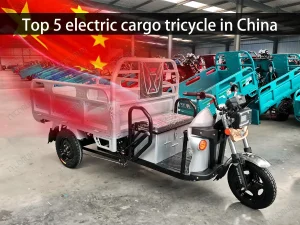
Top 5 electric cargo tricycle in China
This review presents the top 5 electric cargo tricycles in China, featuring detailed specifications and performance insights. Evaluating criteria such as load capacity, battery efficiency, and safety features, this guide assists buyers in selecting the ideal tricycle based on individual requirements.
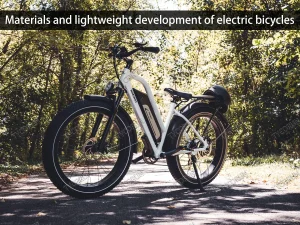
Materials and lightweight development of electric bicycles
This article provides an insightful exploration into the development of electric bicycles, focusing on advancements in materials and lightweighting techniques. It delves into the historical evolution of electric bicycles, analyzes various bicycle frame materials, discusses the development of electric power assist technology, and offers an overview of the electric assist bicycle market. Through detailed examination and analysis, it highlights the importance of lightweighting for electric bicycles and identifies key trends shaping the industry’s future.

